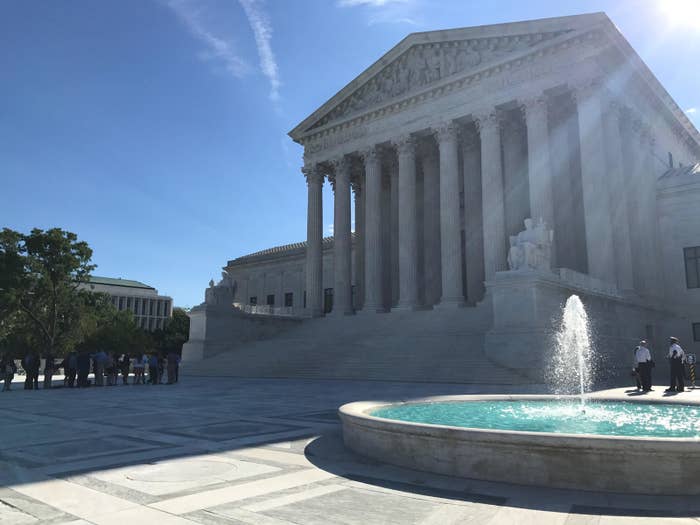
On Monday, the Supreme Court ruled on what might seem like a local dispute — the funding of playground resurfacing.
The case, Trinity Lutheran Church of Columbia, Inc. v. Comer, concerned a Missouri rule that barred churches from a program that allowed groups to be reimbursed for resurfacing playgrounds with recycled tires. On Monday, the court ruled that Missouri's decision to bar churches from the state's scrap tire program violated the First Amendment's Free Exercise Clause.
Chief Justice John Roberts wrote the court's opinion, but — in what could be the more significant aspect of the ruling — disagreements over aspects of Monday's decision suggested that, while the outcome here was clear for most of the justices, the court is in flux on its views about the role of religion in America.
"[T]he exclusion of Trinity Lutheran from a public benefit for which it is otherwise qualified, solely because it is a church, is odious to our Constitution ... and cannot stand," Roberts wrote for the court.
The decision came on the same day that the court agreed to hear a major case about whether bakers can refuse to bake wedding cakes for same-sex couples on the grounds of their religious beliefs.
The court is still adjusting to having nine justices again thanks to the recent addition of Justice Neil Gorsuch, and the Trinity Lutheran case produced some new and interesting dynamics — regarding the conception of the case, what was most important about it, and even one footnote.
Roberts was joined in most of his decision by five of his colleagues — justices Anthony Kennedy, Clarence Thomas, Samuel Alito, Elena Kagan, and Gorsuch.
But Thomas and Gorsuch each wrote separately, concurring in part and joining one another's concurring decisions. In addition, and signaling some underlying tensions, Thomas and Gorsuch did not join one footnote of Roberts's opinion for the court.
The footnote in question stated that: "This case involves express discrimination based on religious identity with respect to playground resurfacing. We do not address religious uses of funding or other forms of discrimination."
That footnote, therefore, is a statement only from Roberts, Kennedy, Alito, and Kagan.
Justice Stephen Breyer made a similar point in his separate decision, although he only concurred in the court's judgment in the case. In it, he wrote: "I agree with much of what the Court says and with its result. But I find relevant, and would emphasize, the particular nature of the 'public benefit' here at issue." (The public benefit here being the "health and safety of children.")
Gorsuch countered that understanding of the case, writing that "the general principles here do not permit discrimination against religious exercise—whether on the playground or anywhere else."
Justice Sonia Sotomayor, joined by Justice Ruth Bader Ginsburg, dissented from the decision altogether — and Sotomayor took the rare step of reading her decision from the bench to voice her disagreement with the court's ruling.
Noting that the court presented the case as "a simple case about recycling tires to resurface a playground," Sotomayor countered that the "stakes are higher" in the case, and as a result of the court's ruling.
"The Court today profoundly changes that relationship by holding, for the first time, that the Constitution requires the government to provide public funds directly to a church," she wrote, warning that the decision "weakens this country’s longstanding commitment to a separation of church and state."

